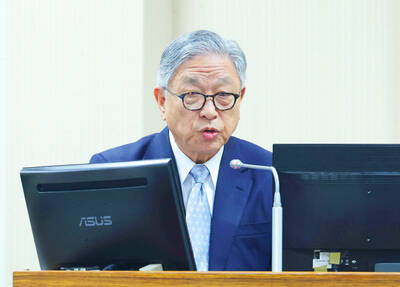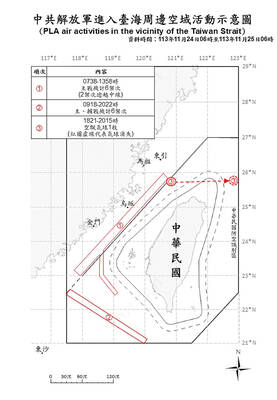Liberty Times (LT): What is your view on the lay judge system that the Democratic Progressive Party (DPP) is expected to introduce during this week’s extraordinary session at the legislature, given that civic groups have been calling for a jury system?
Lo Ping-cheng (羅秉成): Back in 1987 the Judicial Yuan proposed a trial version of a lay judge system for criminal cases. The proposal was largely based on Germany’s lay judge system. In the 30 years since then the Judicial Yuan has always leaned toward a lay judge system. Assessing the judicial system, it has said since the beginning that only experts could participate in trials, [but through a lay judge system] later on common people could also participate.
However, the lay judge system proposed during the administration of former president Ma Ying-jeou (馬英九) would only allow lay judges to observe cases and express opinions — they would not be able to jointly rule on cases with professional judges. Everyone disagreed with that proposal.
The lay judge system being proposed now would allow lay judges to rule on cases together with professional judges.
LT: What obstacles could appear when trying to introduce a jury system in Taiwan?
Lo: The jury system is a product of common law, which is different from the civil law system we adopted. On top of that the cultural institutions are also quite different. [In countries that use the jury system] there is much more heterogeneity.
In a jury system a judge will give instructions before a jury deliberates. For example, in law there is something called dolus indeterminatus [indefinite intent]. It takes study and training to understand the meaning of indefinite intent.
If a prosecutor indicts a defendant for unintentional homicide, the professional judge must first give the jury instructions and explain to them the meaning of indefinite intent, because, in principle, the jury members have no legal training. Our judges have no experience in this area. The judge’s ability to correctly instruct the jury would have a direct impact on the outcome of a case. The legality of the ruling would also be called into question. The whole thing is quite complicated.
Jury systems also have two special characteristics.
First, rulings by juries have no ratio decidendi [stated rationale for the ruling]. It is like holding a vote through a show of hands. There is no evidence or proof through argument.
Second, in the case of a not-guilty verdict, the prosecutor, in principle, cannot appeal. This system is known as “asymmetric appeal.” Would Taiwanese be okay with such a system?
Furthermore, if a jury system is introduced, numerous systems would need to be combined, and the scope of the change would be quite wide.
LT: Civic groups have proposed a compromise by calling for a six-year trial of a concurrent implementation of a jury system and a lay judge system. Would such a trial be possible?
Lo: The problem with concurrently implementing the two systems is that there are no countries that have successfully done so that we can look at for precedents.
Two countries that have tried to do so are Germany and Austria. Germany experimented with a jury system in the 19th century, but its implementation was not ideal, so they introduced a lay judge system and kept both in place for a while. In the end they scrapped the jury system and kept the lay judge system.
Austria had both systems concurrently implemented, but the jury system was heavily criticized and was applicable in about only one-10th of the cases when the lay judge system was used.
Also, when Germany scrapped its jury system, part of the reason was the financial burden it caused the state.
The lay judge system we are looking to introduce is applicable to criminal cases carrying sentences of 10 years or more. There are about 500 to 600 such cases annually and we would need six lay judges.
If we introduce a jury system at the same time, according to the proposals raised by civic groups, we would use juries in up to 3,000 cases annually, and would need nine to 12 jurors per case. The investment in personnel, time and other resources would be significantly greater.
When the Judicial Yuan looked at these proposals, it estimated that a lay judge system would entail few obstacles, few resources and little risk. It is only temporary that we are not considering a jury system. If a lay judge system goes smoothly, in six years after assessments are made, would there be a chance that a jury system would be implemented? I would not rule out the possibility that a jury system could replace a lay judge system at that time.
LT: What are your thoughts on the allegations by civic groups that the DPP is using its legislative majority to push through the Judicial Yuan’s proposed version and that not enough dialogue with the public has taken place?
Lo: The whole jury system structure is complicated. The version of a jury system proposed by civic groups, in its density and the scope of its clauses, would be difficult to effectively examine and discuss all of its content in the two short years before reforms are expected to be implemented.
If we were to put it off until the next legislative session, there would be even less time to prepare for its implementation.
Translated by staff writer William Hetherington

A decision to describe a Chinese Ministry of Foreign Affairs statement on Singapore’s Taiwan policy as “erroneous” was made because the city-state has its own “one China policy” and has not followed Beijing’s “one China principle,” Deputy Minister of Foreign Affairs Tien Chung-kwang (田中光) said yesterday. It has been a longstanding practice for the People’s Republic of China (PRC) to speak on other countries’ behalf concerning Taiwan, Tien said. The latest example was a statement issued by the PRC after a meeting between Singaporean Prime Minister Lawrence Wong (黃循財) and Chinese President Xi Jinping (習近平) on the sidelines of the APEC summit

Taiwan’s passport ranked 34th in the world, with access to 141 visa-free destinations, according to the latest update to the Henley Passport Index released today. The index put together by Henley & Partners ranks 199 passports globally based on the number of destinations holders can access without a visa out of 227, and is updated monthly. The 141 visa-free destinations for Taiwanese passport holders are a slight decrease from last year, when holders had access to 145 destinations. Botswana and Columbia are among the countries that have recently ended visa-free status for Taiwanese after “bowing to pressure from the Chinese government,” the Ministry

HEALTHCARE: Following a 2022 Constitutional Court ruling, Taiwanese traveling overseas for six months would no longer be able to suspend their insurance Measures allowing people to suspend National Health Insurance (NHI) services if they plan to leave the country for six months would be abolished starting Dec. 23, NHIA Director-General Shih Chung-liang (石崇良) said yesterday. The decision followed the Constitutional Court’s ruling in 2022 that the regulation was unconstitutional and that it would invalidate the regulation automatically unless the NHIA amended it to conform with the Constitution. The agency would amend the regulations to remove the articles and sections that allow the suspension of NHI services, and also introduce provisional clauses for those who suspended their NHI services before Dec. 23, Shih said. According to

‘GRAY ZONE’ TACTICS: China continues to build up its military capacity while regularly deploying jets and warships around Taiwan, with the latest balloon spotted on Sunday The US is drawing up contingency plans for military deployments in Japan and the Philippines in case of a Taiwan emergency, Japan’s Kyodo news agency reported. They would be incorporated in a first joint operation plan to be formulated in December, Kyodo reported late on Sunday, citing sources familiar with Japan-US relations. A US Marine Corps regiment that possesses High Mobility Artillery Rocket Systems — a light multiple rocket launcher — would be deployed along the Nansei Island chain stretching from Kyushu to Yonaguni near Taiwan, Kyodo said. According to US military guidelines for dispatching marines in small formations to several locations,